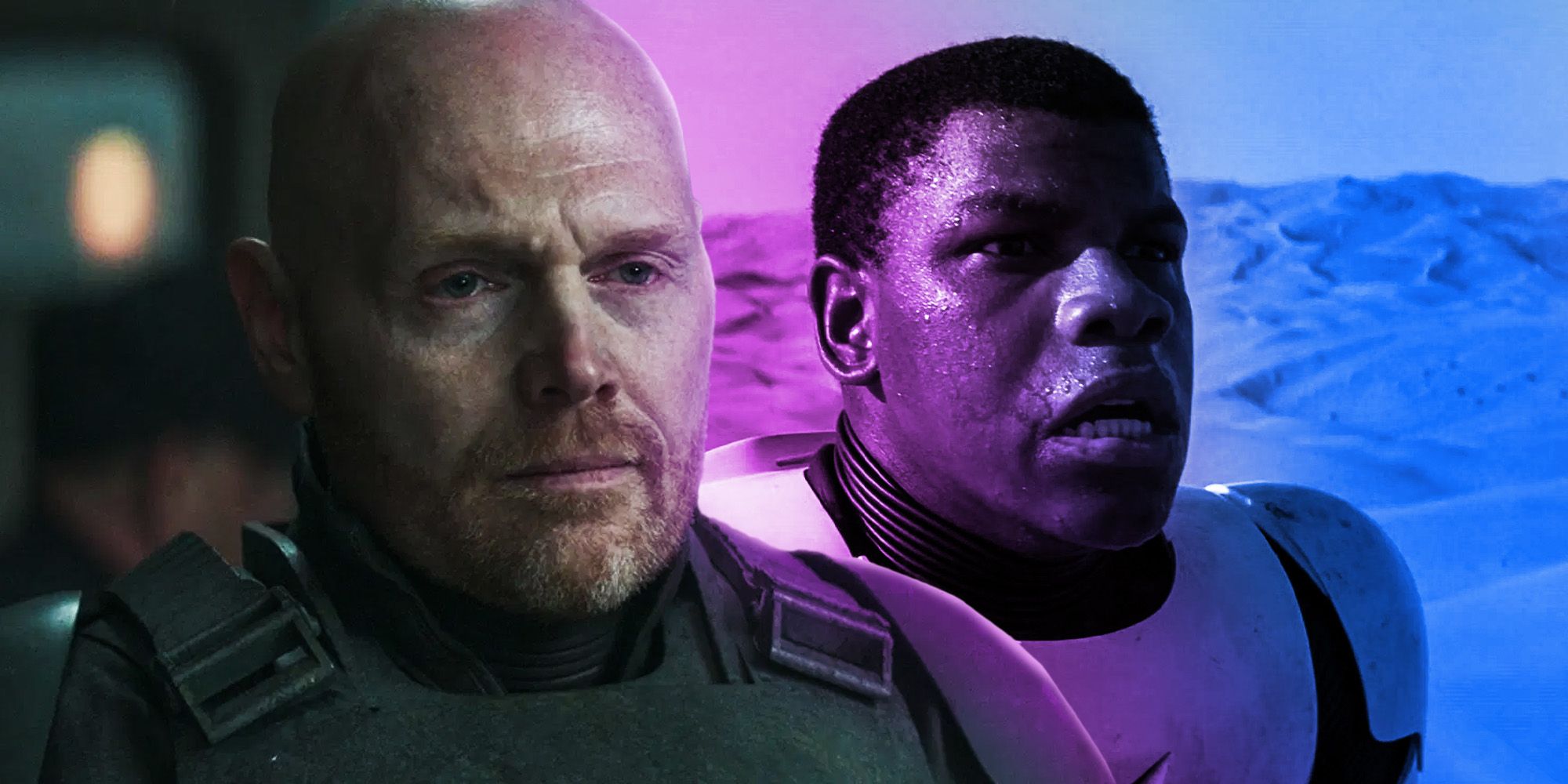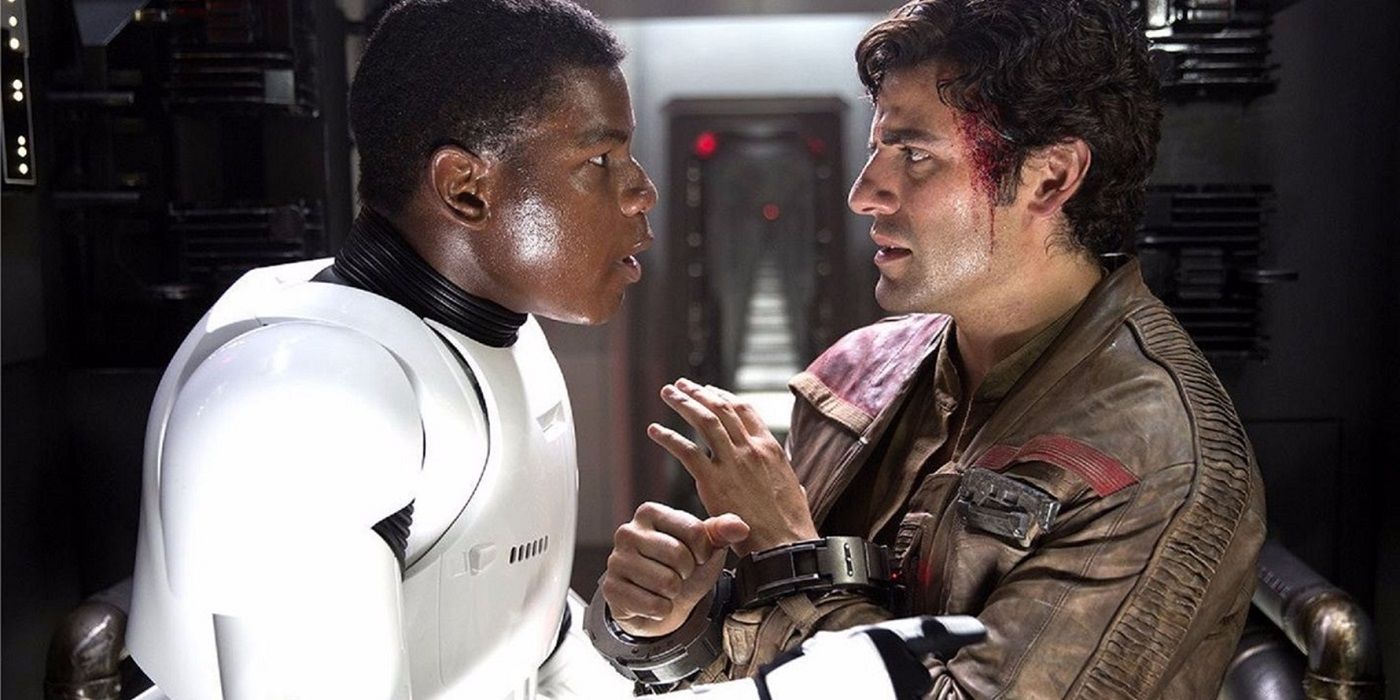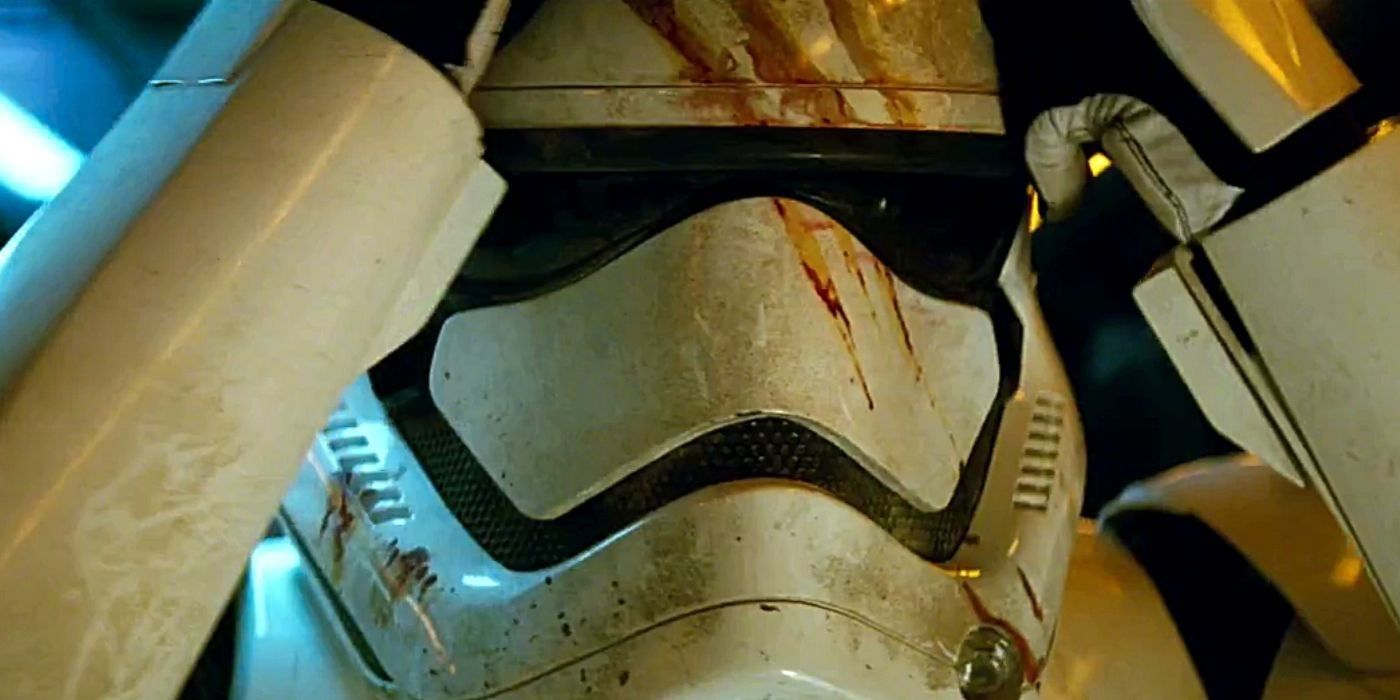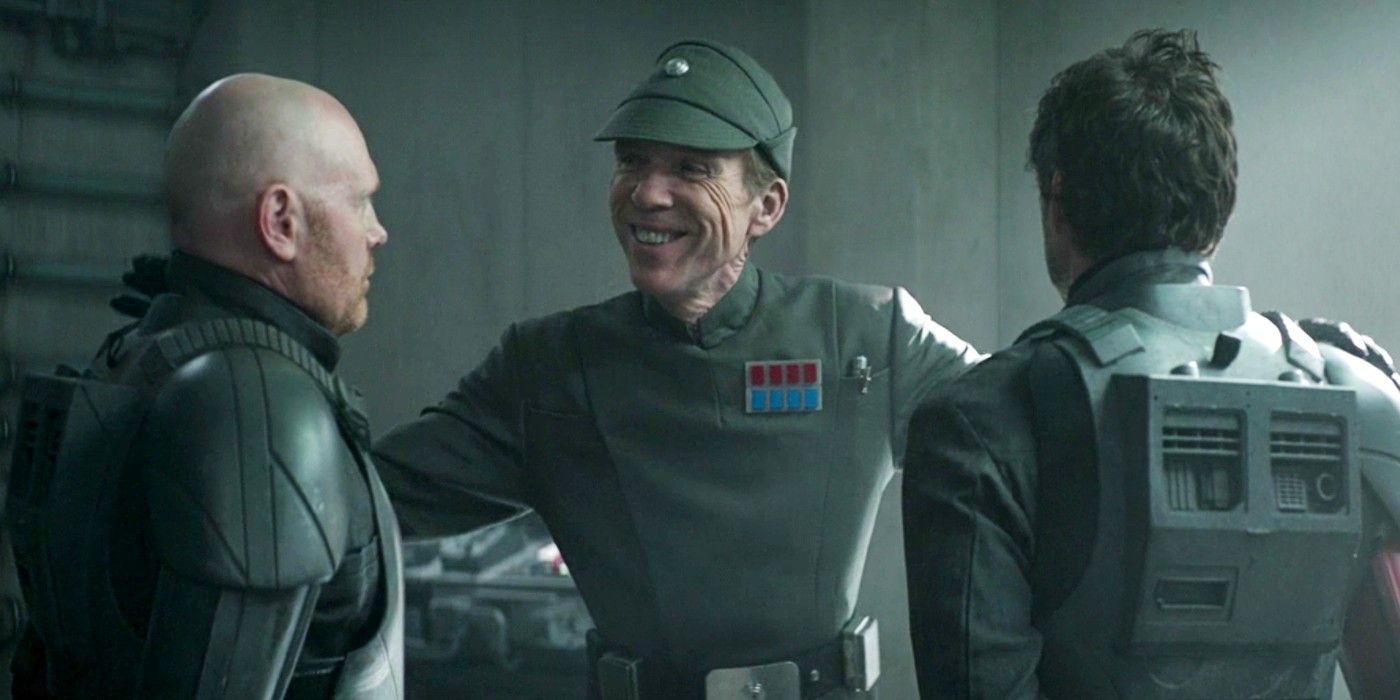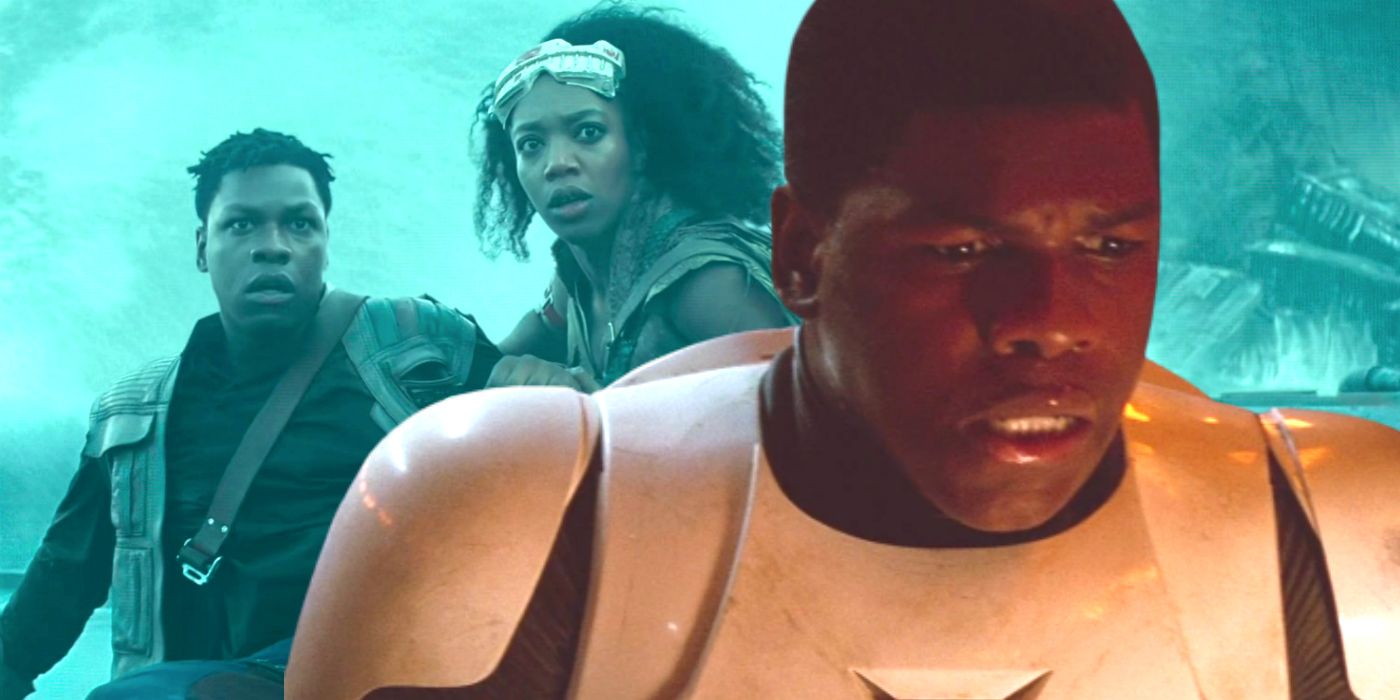The Mandalorian’s second season featured the redemption of Migs Mayfeld, a former Imperial sharpshooter, and his successful character arc shows what the sequels could have given Finn. Mayfeld was featured in only two episodes, but his character brought about an excellent exploration of how the Imperial troops experienced the Empire and how broken the system was for them. Finn was set up for a similar exploration of the First Order, but that story was left behind when he left the stormtroopers. Finn could have had an arc just as satisfying as Mayfeld’s if that part of his backstory had not been dropped after the first movie.
Mayfeld first appeared as part of the crew Din Djarin briefly teamed up with to break a prisoner out of a Republic prison ship, which ended in Mayfeld’s own imprisonment. However, when Grogu was kidnapped by Moff Gideon, Djarin came to Mayfeld for help finding Gideon. His method involved using an Imperial terminal, which brought him face to face with Imperial remnants, including his former commanding officer Valin Hess. In one spectacular scene, Mayfeld’s anger toward the Empire erupts as he confronts Hess and finally decides to kill him to hold him accountable for the Imperial soldiers who died under his authority.
Finn could have done this arc in a much bigger way if the sequel trilogy had delivered on his promise. In the beginning, Finn was teased as a major protagonist in the sequels with an important arc to match Rey’s. However, as the movies progressed, he was relegated to side missions with little impact on the overall plot, wasting Finn’s incredible story potential.
In two episodes, The Mandalorian was able to create a more fitting story of stormtroopers and former Imperials than the sequels gave Finn. Mayfeld’s arc is everything Finn’s story could have been if only it had been properly executed, but the sequels made several missteps with Finn that undercut their ability to tell that story.
Finn's Origin Story Had Huge Potential
Finn’s backstory was a fresh angle The Force Awakens started to explore. Finn gave the faceless henchmen of the original trilogy a face and made the stormtroopers feel like real people. Through his early conversations with Poe Dameron, it quickly became clear the stormtroopers are also victims of the Empire, children conscripted into an army and brainwashed with propaganda to be the Empire’s cannon fodder. Finn is not even given a name as a stormtrooper, only a number.
It was an exciting twist on Star Wars’ usual worldbuilding, bringing stormtroopers into a gray area of morality where they were both villains and victims and could deal with their brainwashing in individual ways. Finn showed that stormtroopers could be good people, that they could resist the way they were raised and trained to become the Empire’s soldiers.
Finn's Stormtrooper Backstory Was Wasted
Despite all the groundwork Finn’s origin story laid to redefine stormtroopers, his backstory was almost entirely dropped except for his revenge on Captain Phasma and his fights with loyal stormtroopers. No other stormtroopers showed any hint of the same humanity, and even Finn rarely saw their humanity anymore once he left them. Instead of Finn’s show of individuality casting all stormtroopers as individuals instead of a faceless evil, it only made Finn stand apart as the one good stormtrooper.
The Rise of Skywalker made an attempt at following up on this premise by introducing Jannah and her group of defected stormtroopers, but it was too little and too late. This still failed Finn’s promised character arc through the Star Wars sequel trilogy by forcing what should have been a main focus of his story over three movies into only a chance meeting with other defectors. Finn had nothing to do with these stormtroopers until well after they had chosen to defect on their own, and the idea of many stormtroopers defecting also led nowhere.
The novelization of The Force Awakens also tried to fix the implications about the stormtroopers by giving Finn a friend, the soldier who died on Jakku and left his blood smeared across Finn’s helmet. In the novel, he was a less successful trooper who Finn often covered for until Phasma ordered him to stop rescuing his friend, as helping the weak would only weaken the First Order. This would have better established his connections to fellow soldiers and his anger toward Phasma. However, this detail did not make it into the movie, and despite the many stormtroopers who appear in the films, Finn had no apparent connections to other stormtroopers who seemed as redeemable as he did.
Why Mayfeld's Character Arc Worked So Well
Mayfeld’s return to the Imperials in The Mandalorian successfully showed the humanity behind the stormtroopers by forcing Mayfeld and Din Djarin into the roles of Imperial soldiers in their everyday lives. For that one mission, they had to act as if they were among friends at the Imperial base. When Djarin is fighting off pirates, the audience is set up to feel relieved by the arrival of the TIE fighters that finally chase them away. The camaraderie the other soldiers show them after their heroic display against the pirates demonstrates how easy it would be to form connections to the other soldiers and begin to care about them while living and fighting side by side.
This makes Mayfeld’s anger over the loss of his fellow soldiers at Burnin Konn during Operation Cinder all the more palpable. He has seen how the Empire treated him and every soldier he cared about as disposable. Mayfeld may be the only Imperial who turns on the Empire during that episode, but it is his emotion over other Imperial soldiers, the friends that he lost as the Empire threw them away, that makes his revenge on Hess satisfying.
How Finn's Story Could Have Been Better
The story of stormtroopers defecting to the Rebellion should have been one of the highlights of the sequel trilogy. Instead of forcing Finn into constant conflict with soldiers who all believe him to be a traitor, he could have tried to form connections with the stormtroopers who stayed behind. His defection and his frequent run-ins with the First Order afterward could have inspired others to follow him to the Rebellion.
The trilogy could have introduced Jannah and the other defectors as stormtroopers first, establishing them as individuals like the clone troopers were in The Clone Wars. The audience could get to know several stormtroopers who still work under the First Order when Finn leaves, even possible friends of Finn during his soldier days, giving him a positive connection to his past. Finn could have continued to run into them during his fights with the First Order, coming into conflict with them and appealing to them as people to set up their own defections. Finn treating the stormtroopers as humans, including refusing to see them as cannon fodder like the First Order did, could have set up the stormtroopers to play a major role as heroes turning on the First Order in the final showdowns. Like Mayfeld’s lost comrades in The Mandalorian, Finn’s story as a stormtrooper works best when there are people in the First Order he cares about.

